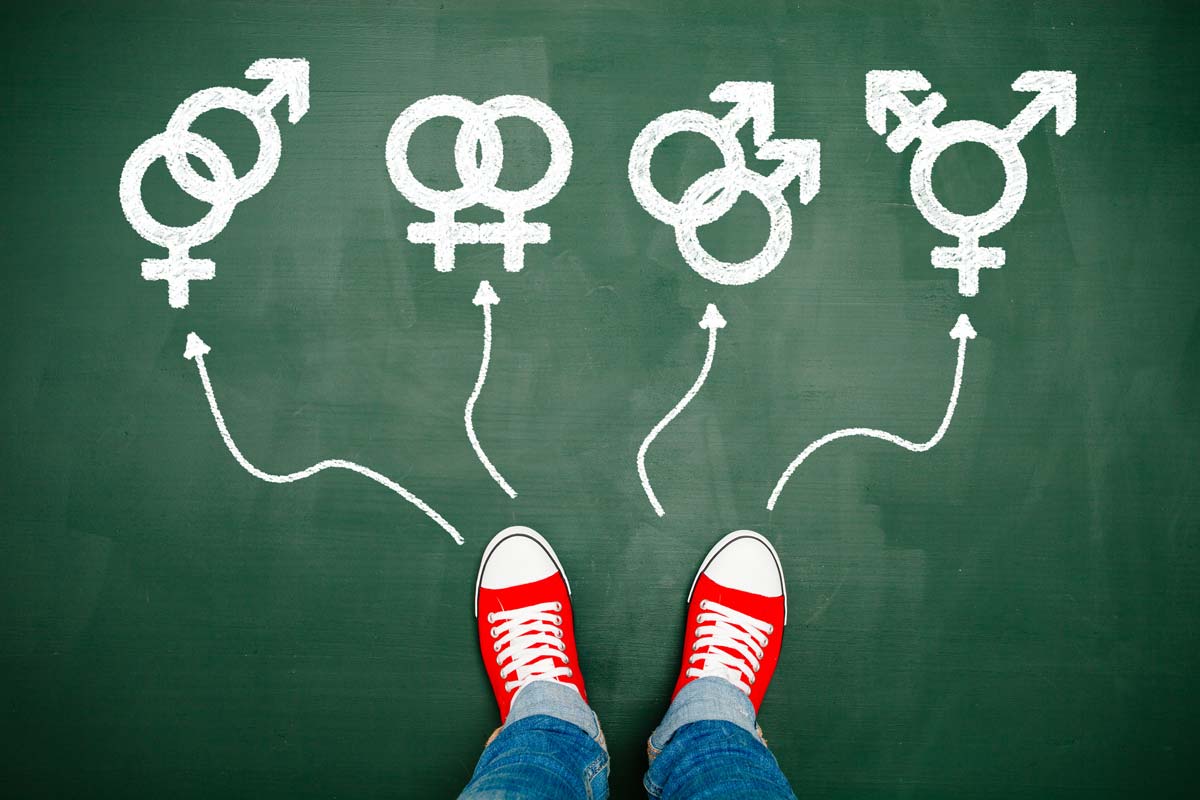
A Better Way to Communicate with the LGBTQ Community
Filed Under: Best Practices, Market Research, LGBTQ+, Grow / Maintaining Strong Brands
Anna Rossi
Senior Director, Quantitative Research
(Updated May 2024)
You might remember Kristen Stewart’s opening monologue from the February 4th, 2017 episode of Saturday Night Live (SNL) because she accidently cursed on live television, and cast member Kate McKinnon’s humorous reaction was caught on camera. Also in this same monologue, Stewart refers to herself as “so gay.” To many, especially the LGBTQ+ community, this isn’t new information regarding Stewart. Like many celebrities, Stewart prefers to keep her private life private; but in interviews, she has openly discussed having a girlfriend. This particular declaration is noteworthy because it’s the closest she has come to labeling her sexuality. In the past, the focus has been on her relationships, but she has always stopped short in interviews of claiming her sexual identity as being “gay” as she did on SNL. Does she identify as a lesbian? Bisexual? Pansexual? Saying she’s “so gay” doesn’t point to a specific label or identity, but it’s getting close – and it shows that she doesn’t identify as “straight.”
Kristen Stewart’s avoidance of labels brings up an important point for marketers regarding the LGBTQ+ community. Marketers may focus on how people identify or label themselves. But there actually are three dimensions to sexuality: identity, behavior, and attraction. Currently, in marketing campaigns and market research studies, only one of the three dimensions is considered, and that’s identity. It’s important that the other two dimensions — behavior and attraction — are taken into account as well; because while there are indeed many people within the LGBTQ+ community that have no problem identifying themselves as lesbians, gay men, bisexual, etc., there are also many individuals, like Stewart, who prefer to avoid labels.
Are there a significant number of people who avoid labels? Researchers who attempt to measure the LGBTQ+ population in the United States by only measuring identity estimate that LGBTQ people make up about 7.6% of the population. But researchers who include behavior and attraction as well have found that approximately 8.2% of the population have engaged in same-sex sexual behavior, and about 11% reported having some level of same-sex sexual attraction. The differences in these estimates show that there are significantly more people who engage in same-sex behavior and have same-sex attractions than identify as LGBTQ+.
Marketers should think carefully about who they want to target or appeal to when designing marketing campaigns: people who will volunteer that they identify as part of the LGBTQ+ community or people who may be openly in a long-term same-sex relationship but don’t necessarily want to be labeled by that. While you may be able to appeal to the former group through LGBTQ+ causes and activism or community pride, these tactics might not be as effective for the latter (and potentially larger) group. Instead, you’ll need a greater understanding of who they are as people and how their behavior influences their purchasing. For instance, Kristen Stewart’s purchasing habits might not be influenced by a desire to be part of the LGBTQ+ community because she prefers to avoid that label, but you can bet those purchasing habits are influenced by living with her girlfriend.
Market research can help guide your marketing campaigns to make them more effective and help you better understand this group of consumers. Even if you aren’t interested in targeting LGBTQ+ people, it’s still important to measure respondents’ sexuality in your market research studies just as you ask other profiling demographic questions such as gender or marital status. You may find that LGBTQ+ people are an important consumer group for your brand. Again, Kristen Stewart shows us that the typical method of asking respondents to choose if they are straight/heterosexual, lesbian, a gay man, bisexual, or something else may not be the best strategy to determine respondents’ sexuality. After all, how would Stewart answer this question? She has avoided labeling her sexuality, until her appearance on SNL, so one can easily imagine her closing out your survey, and not answering this question, in order to avoid a box she feels only captures a small part of herself. This means that many LGBTQ people are getting left out of studies despite the best efforts by brands to include them simply because they prefer to avoid labels.
Stewart shows us the importance of measuring with all three dimensions which provides a more accurate way of assessing sexuality and avoids alienating those who don’t subscribe to a specific label. This will allow marketers to reach more people in the LGBTQ+ community and better understand LGBTQ+ consumers. C+R’s multicultural division, CultureBeat, can help you understand the most appropriate way to speak to LGBTQ+ consumers and measure their sexuality to lead to the most actionable insights for your brand.
explore featured
Case studies

